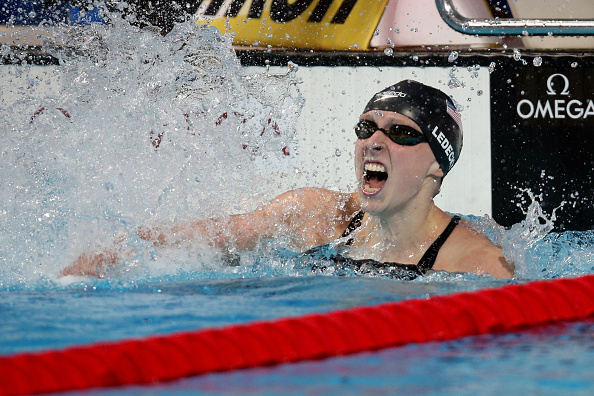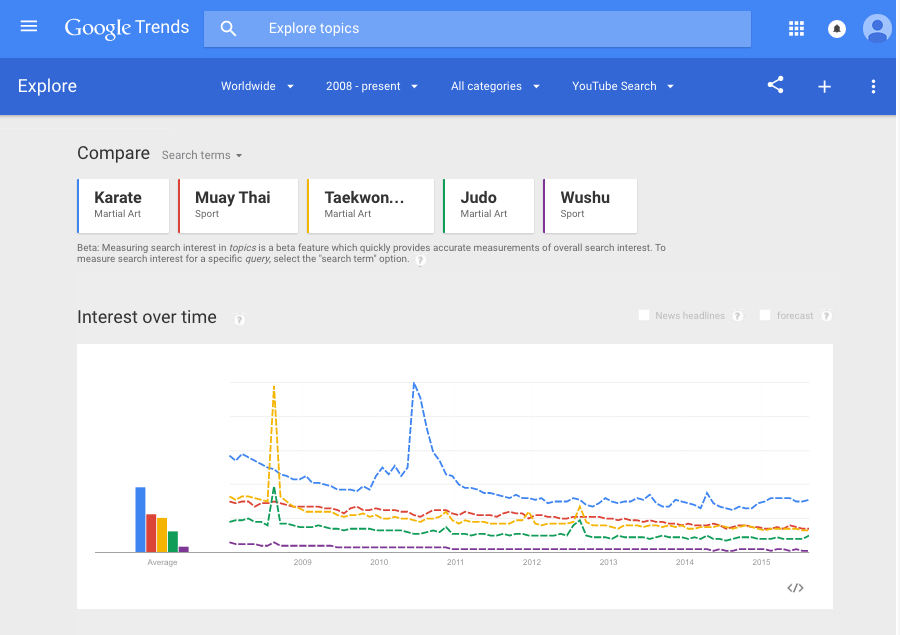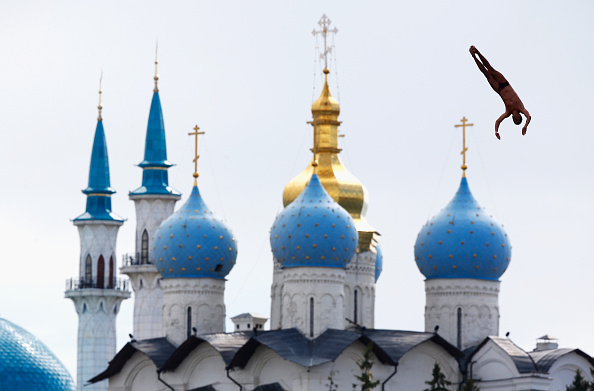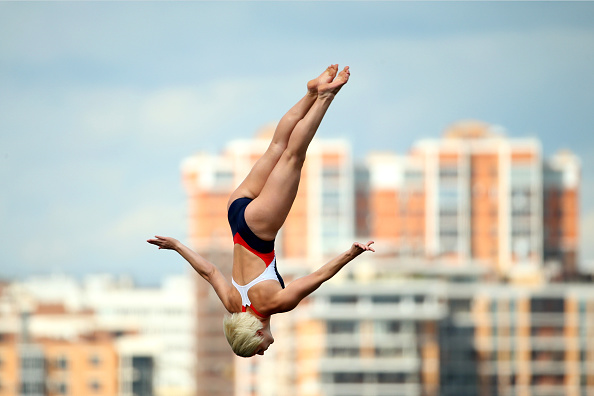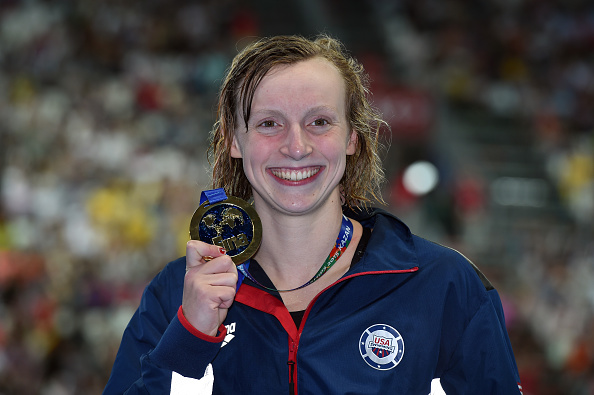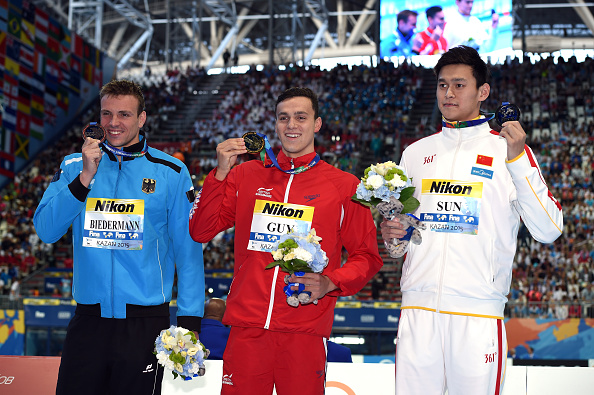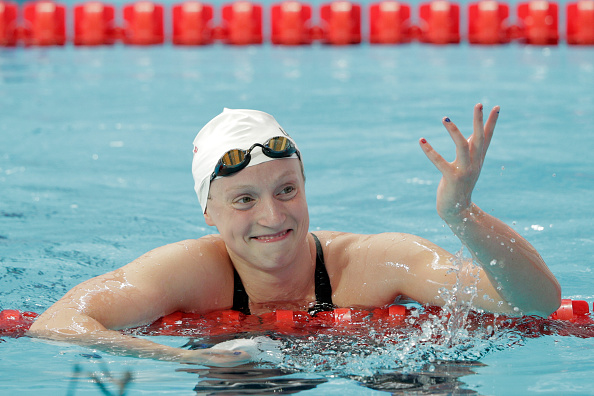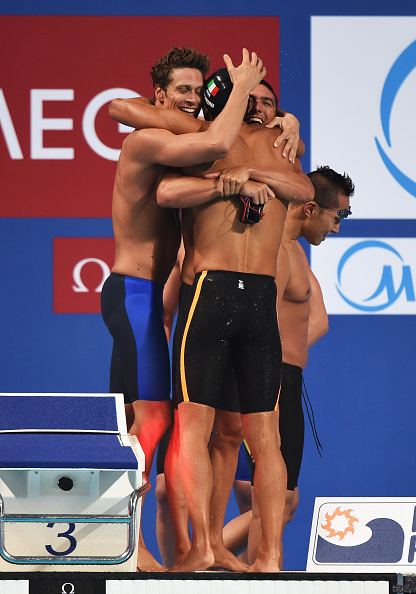The business of America, Calvin Coolidge once said memorably, is business. Who knew that the ghost of Calvin Coolidge might be Nick Symmonds’ spirit animal?
It’s all well and good that Symmonds, the middle-distance runner and provocateur CEO of Nick Symmonds LLC, wants to make money for Nick Symmonds. No quarrel there of any sort. But it would be helpful in the controversy over Symmonds’ forfeited berth in the forthcoming 2015 track and field world championships in Beijing if there was a lot more straight-talk instead of public posturing.
Consider:
— This predicament is entirely of Symmonds’ own making.
Symmonds is the only one that would have been on the U.S. 2015 worlds team — a team that figures to shine big-time in Beijing, by the way — who declined to sign the so-called “Statement of Conditions” that asks athletes to wear Nike-issued gear.
This is not an unreasonable request. Nike sponsors the team. It’s a team event, from start to finish.
Symmonds is sponsored by Brooks. Fine. Good for him. But it’s understood that for the duration of the world meet, he wears Nike apparel.
— For Symmonds to say he was “left off” the team, as he did on Twitter, is disingenuous.
I just received word from @usatf that I have been left off the #Beijing2015 team.
— Nick Symmonds (@NickSymmonds) August 10, 2015
To be clear: Symmonds chose not to sign by the deadline, with the predictable consequence.
— A further credibility matter: Symmonds says he “refused” to sign the Statement of Conditions for the 2014 world indoor championships in Sopot, Poland. He made this assertion in an Aug. 10 Huffington Post Q&A.
Really?
Symmonds had in his possession an Aug. 4 letter from USATF chief executive Max Siegel pointing out that Symmonds had executed such an electronic signature at 3 p.m. on Feb. 6, 2014.
—Brooks put out a statement that, referring to Symmonds, said, in part: "... we applaud his leadership in creating a dialogue around athletes' rights."
Dialogue?
In response to a USATF statement offering "respect" for Symmonds' decision not to take part, a statement that also pointed out the federation annually invests more than 50 percent of its revenue in athlete support, this was Symmonds' take on Twitter:
I am offended by @usatf statement. Not my decision to not represent #TeamUSA at #Beijing2015. And 50% investment?? That's a flat out lie. — Nick Symmonds (@NickSymmonds) August 10, 2015
Symmonds to Huffington Post: "USATF has gotten rich on the hard work of the men and women of Team USA and has sold our right to what we wear for millions of dollars -- reportedly $20 million a year from Nike -- and they share very, very little of that money with the athletes."
It's true that USATF stands to make about $20 million annually in its new long-term deal with Nike. The other assertions in that declaration: not true.
Similarly, back to Twitter:
Tomorrow I will present proof that @USATF is stealing millions of dollars from the athletes, getting rich off the hard work of #TeamUSA.
— Nick Symmonds (@NickSymmonds) August 10, 2015
There was no such "proof," particularly of any "stealing." A study asserts USATF distributes 8 percent of its revenues to athletes; USATF says it's more like 50 percent; tax returns say USATF is right.
After engaging in more-than-civil dialogue behind the scenes with Siegel in the lead-up to his decision not to sign, Symmonds' public persona in the aftermath is flamethrower guy? It's for sure not "dialogue." So what is it -- to enhance the Symmonds brand?
How about this gets dialed down and some realities get checked?
— Assuming Symmonds opts right now not to pursue legal process (which would not be his best move for a host of legal and practical reasons but whatever): if there are issues about what amounts to an “official” event and what’s not, the time to resolve that is not right now. It’s at the USATF annual meeting, the first week of December in Houston.
Athletes are forever complaining that their voices don’t get heard. In fact, that’s not the case. There’s a defined process in place that must be followed. There’s a USATF Athletes Advisory Council; there have to be consultations, discussions and, if any, recommendations; and then any such recommendations have to be more widely considered.
What makes Symmonds a special case deserving of individual consideration, and especially right now?
That he said he made “several offers” to help USATF draft a new Statement of Conditions is misleading and unhelpful on two accounts.
One, who is Symmonds to take it upon himself to undertake such an individualized effort? Any such move ignores the process that involves the AAC and the rest of the USATF infrastructure. Two, no one at USATF would be authorized — not Siegel, not anyone — to respond to any such effort.
As Siegel said in his letter, the Statement of Conditions as well as its Operating Regulations and Bylaws are “legislative items,” which means they “may be changed through our legislative process, but no individual at USATF, including the CEO, has the authority to grant an individual a right to waive the requirements of the bylaws.”
— Nike is not, contrary to the belief of some, out to roar over track and field like Godzilla with zero regard for the peasants below.
Every company has its flaws. There have been moments over the past several years when the company has stood by some of its most prominent athletes, and in particular Lance Armstrong, in ways that were, to be gentle, disquieting.
Does Nike want to have a dominant market position in track and field? For sure.
That said, every single person associated with American track and field, or even just interested in it, ought to get down on their hands and knees and give thanks to Nike for its support of the sport. Without Nike, there is no U.S. track and field scene capable of competing at a world-class level. It’s that simple.
Moreover, the company’s lengthy deal with USATF, with that roughly $20 million annually, is a godsend. It means USATF is, for the first time ever, flush with cash. It also has given life to the federation — made it seem like a proposition worth investing in — as Siegel has sought additional sponsorships, which by the way have been rolling in.
— The 8 percent figure? This comes from a study by Smith College economist Andrew Zimbalist. That study formed the basis of another Huffington Post piece, one Symmonds himself wrote.
First: was the study commissioned by the Track and Field Athletes Association, an advocacy group? Was Zimbalist paid for his opinion? Did he share his valuable time for free? These are reasonable questions that, again, go to credibility. It’s on Symmonds to provide those answers if he is citing to the study as authority.
At any rate, the economist is quoted as saying, “In other professional sports, athletes roughly earn between 25 and 35 percent of revenues in individual sports and between 45 and 55 percent of revenues in team sports.”
The notion, of course, is that somehow USATF is screwing the athletes.
Ridiculous.
How about real facts? USATF makes its annual Form 990 U.S. tax filings available on its own website.
For calendar year 2013, the most recent year available, the federation took in revenue of $17,655,949.
(As a point: Zimbalist, purportedly citing to the very same forms, says USATF’s 2013 “total reported revenue” amounted to $12.7 million. The real number is right there on Line 12 on the first page, and again on page 9, total revenue: $17,655,949.)
USATF spent a combined $12,076,638 on 1. elite athlete competitions, $6,964,661; 2. athlete support and development, $3,543,976; and 3. grass roots and member-based programs, $1,568,001.
This is easy math. $12,076,638 over $17,655,949 equals 68.4 percent.
You want to take out the grass roots line-item? OK. That cuts the spending to $10,508,637.
Divide that sum by $17,655,949. That equals 59.5 percent.
USATF spokeswoman Jill Geer said it anticipates the 2015 numbers will show that the federation will spend roughly $15 million, or about half its $30 million budget, on “a combination of cash directly to elite athletes, USATF payment of athlete costs and high performance programs that support elite athletes.”
— Last year, as Geer also noted, USATF committed publicly to spending an additional $9 million on elite athlete programs between now and 2020. “We are working with the Athletes Advisory Committee on how best to spend that money and invest in our elite athletes,” she said, and a major part of the discussion involves how to define “professional track athlete,” not an easy thing.
— Which cuts to the crux of the matter. It doesn’t matter for one second what other athletes in other professional sports are making. Sure, crazy-high NFL or NBA salary deals are interesting but in the context of track and field, they don’t matter remotely.
It’s classic apples and oranges.
Why?
1. Track and field athletes are independent contractors. An NFL, NBA, MLB or NHL player is an employee.
2 Those four sports are unionized, with salaries set according to a process of vigorous collective bargaining
3. Track and field athletes will never be employees. (Think tennis or golf players on the circuit, or NASCAR drivers. They’re not employees, either.)
4. Thus it’s up to each and every athlete to maximize his or her own earning potential. This is not socialism here, people. It’s capitalism.
— Going to a world championships can accrue certain benefits: TV time, the possibility of winning medals and enhancing one’s personal brand, social media up time and more.
If you want to go, cool. If not, also cool. That’s your choice as an independent contractor.
Oh, and if 1:44.53 is your season’s best in the 800, and you’re looking at a field in Beijing that is going to be dramatically better than it was in Moscow two years ago, and you’re at risk of not even making the finals, you might make the choice that it’s better for your brand not to go but, instead, cast yourself as a crusader in the vein of the saintly Steve Prefontaine against USATF. Heck, USATF. By definition, senior officials at USATF couldn't possibly have the athletes' interests at heart, could they?
Actually, they totally, profoundly, professionally and passionately do.
No one should take any of this personally, of course. It’s just business.






